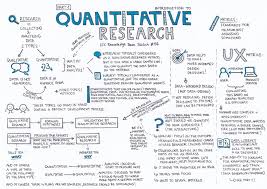
Review of quantitative research design
Order Instructions:
Review of quantitative research design
Inferential statistical methods are widely used in research in order to conduct tests of differences for dependent or independent samples, analyse associations between different types of variables and establish relationships using models between dependent and independent variable(s). For this week’s Key Concept Exercise you will evaluate examples of inferential statistical analysis by discussing empirical results and the strengths, weakness and suitability of different statistical estimation and hypothesis testing procedures.
To prepare for this Key Concept Exercise:
• Read the Required Learning Resources for Week 5. (Provided by email)
• It is strongly recommended that you work through the Week 5 Test Your Knowledge Questions and while undertaking your reading. These are located with the Week 5 Learning Resources. (the file is sent by email)
• In approximately 550 words, answer TWO of the FOUR questions in the file provided here on Inferential Statistical Analysis (PDF). (The file is sent by email)
SAMPLE ANSWER
Question 1
The below table shows the results of an OLS regression of US real GDP growth rates (REALGDP) on changes in oil prices (OIL), interest rate (INTERESTRATE) and inflation rates (INFLATION) (monthly data from 1990 to 2013):
REALGDP=CONSTANT+a∗OIL+b∗INTERESTRATE+c∗INFLATION
(a) Discuss the statistical significance of the parameters, interpret the sign and magnitude of the estimates, and overall fit of the model.
The p-value, in this case, quantifies the null hypothesis by indicating that the coefficient is analogous to zero. The zero coefficients mean that there is no effect (Yuan, Cheng & Maxwell 2014). Moreover, the low p-value for Constant, Oil and interest rates demonstrates that the regression model has rejected the null hypothesis. Implicitly, the Constant, Oil and interest rates predictor variables are pertinent to the regression model (Strasheim 2014). As such, any slight variation in these predictor variables will automatically result in changes in the response variable (Radu, 2014). On the other, a high p-value than the standard alpha level represented by inflation rates demonstrates that any variation in the dependent variable is statistically insignificant to cause variations in the independent variables. While the adjusted R-squared that leans towards 100% is considered model fit. There has never been the benchmark for what is a good value. In this case, the adjusted R-Squared for the regression model is 58% fit. When it comes to the significance of the approximated coefficients the T-stat for the constant is greater than 2 in scale and corresponds to the p-value that is less than 5%. This indicates that the independent variable belongs to the model. However, because the oil prices and interest rates have a T-stat that is less than 2 with a corresponding p-value that is less than the standard alpha value of 0.005, implies that the coefficient can only be significant coincidentally (Satorra 2015). On the other hand, the T-stat for inflation is less than 2 with a p-value that is greater than 0.005, hence the variable is not the best fit for the model.
(b) Are the results in line with the predictions of the theory and why?
Yes: the adjusted R-squared of 58% shows that the model expounds 58% of the response statistics around the mean
Question 3
A company wants to produce three different mobile phones, with low-range, mid-range and high-range specifications, respectively. A survey with 100 respondents has been used to reveal the choices of potential customers. The company wants to review the figures to see if the three mobile phones would be equally popular. The results of the Chi-Square test are given in the following tables:
(a) Describe the null hypothesis for the Chi-Square test.
- H0 = Customers do not like phones with low-range, mid-range and long-range specifications
(b) Discuss the results and explain whether there are statistically significant differences in the preference for the three devices.
| Mobile | |||
| Observed N | Expected N | Residual | |
| 1.00 | 31 | 33.3 | -2.3 |
| 2.00 | 45 | 33.3 | 11.7 |
| 3.00 | 24 | 33.3 | -9.3 |
| Total | 100 | 99.9 | |
Because the Asymptotic significance of the statistical tests is less than the standard alpha value of 0.005, it refutes the hypothesis. Moreover, we can, therefore, sum up that other factors other than chance may be operating on the variables for the changes to be this great (Amodio, Aria & D’Ambrosio 2014). The p-value of 0.032 simply indicates that the probability of 3.2% chance may influence the variable. As such, the variations in predictor variables are so minute that chance may constitute to any change (Lemeshko 2015).
(c) What are the underlying assumptions of the Chi-Square test? Explain if, in your opinion, those are met in the above examples
The underlying assumption for this Chi-square test is that customers buy mobile phones regardless of whether or not they have mid-range, low-range and high-range specifications. As such, the chi-square test outcomes fit the model.
References
Amodio, S., Aria, M. & D’Ambrosio, A. 2014, “On concurvity in nonlinear and nonparametric regression models”, Statistica, vol. 74, no. 1, pp. 85-98.
Lemeshko, B.Y. 2015, “Chi-Square-Type Tests for Verification of Normality”, Measurement Techniques, vol. 58, no. 6, pp. 581-591.
Radu, S. C. 2014, TESTING THE MARKET MODEL – A CASE STUDY OF FONDUL PROPRIETATEA (FP). Knowledge Horizons. Economics, 6(1), pp. 126-131.
Satorra, A. 2015, “A Comment on a Paper by H. Wu and M. W. Browne (2014)”, Psychometrika, vol. 80, no. 3, pp. 613-618.
Strasheim, A. 2014, “Testing main and interaction effects in structural equation models with a categorical moderator variable”, Management Dynamics, vol. 23, no. 4, pp. 31-68.
Yuan, K., Cheng, Y., & Maxwell, S. 2014, Moderation analysis using a two-level regression model. Psychometrika, 79(4), pp.701-732.
We can write this or a similar paper for you! Simply fill the order form!




